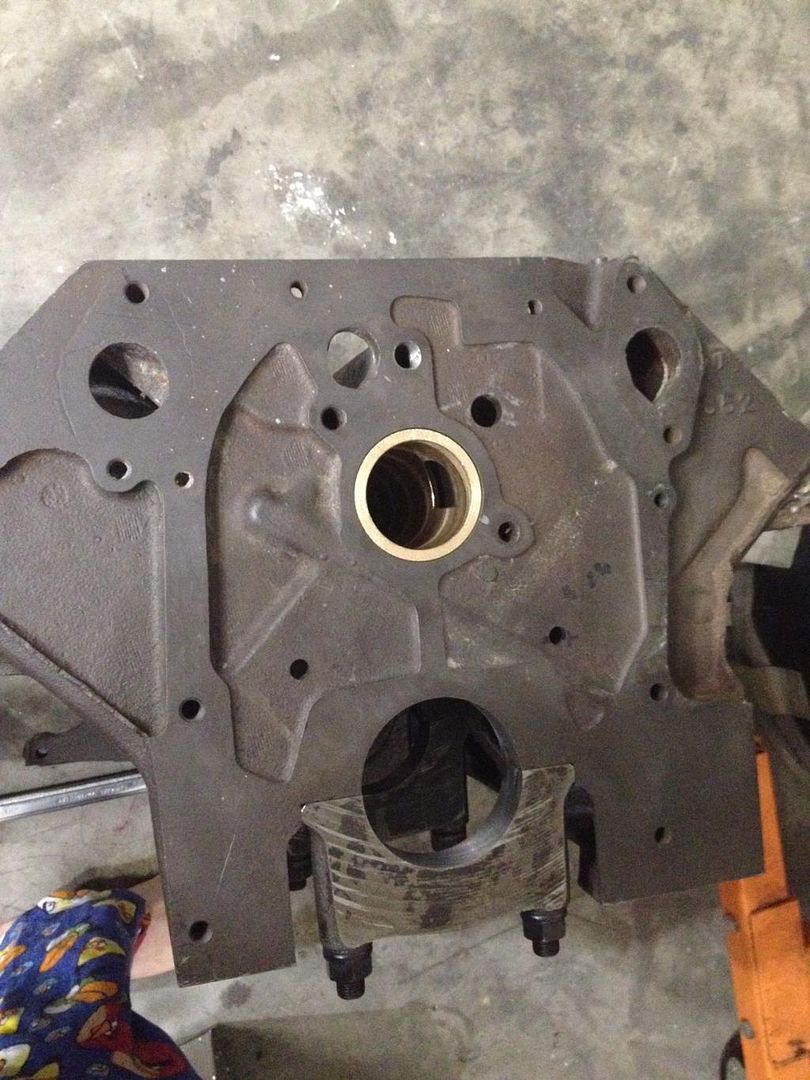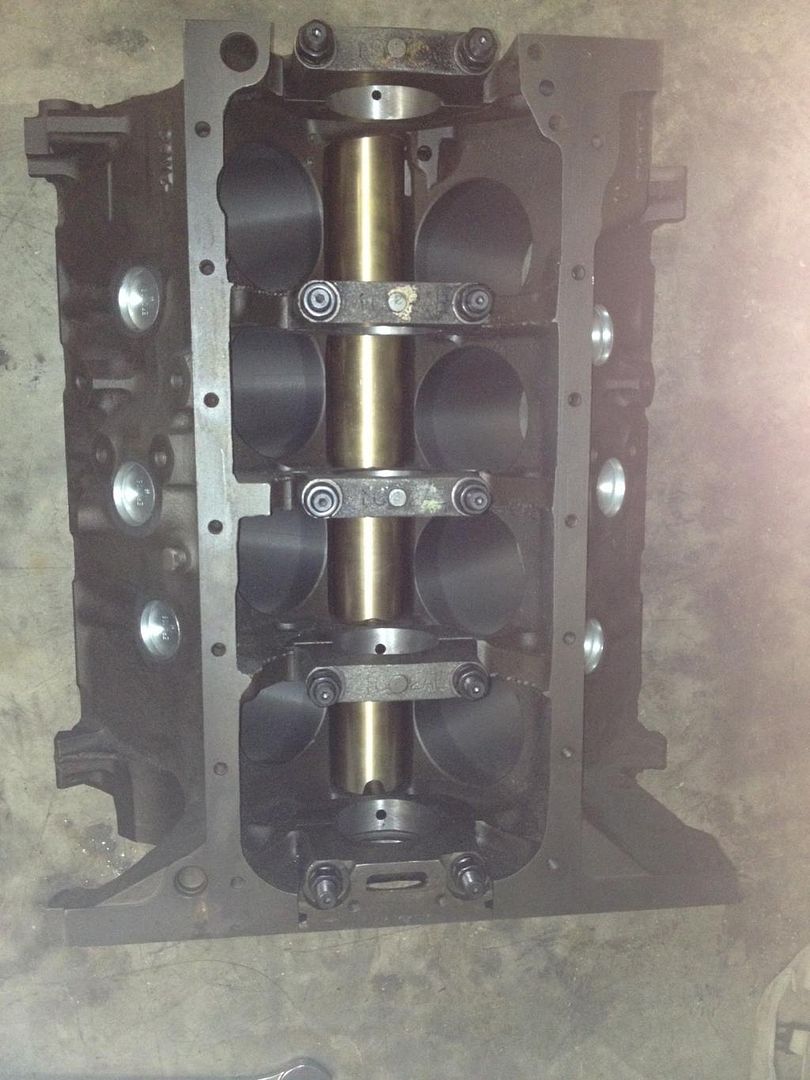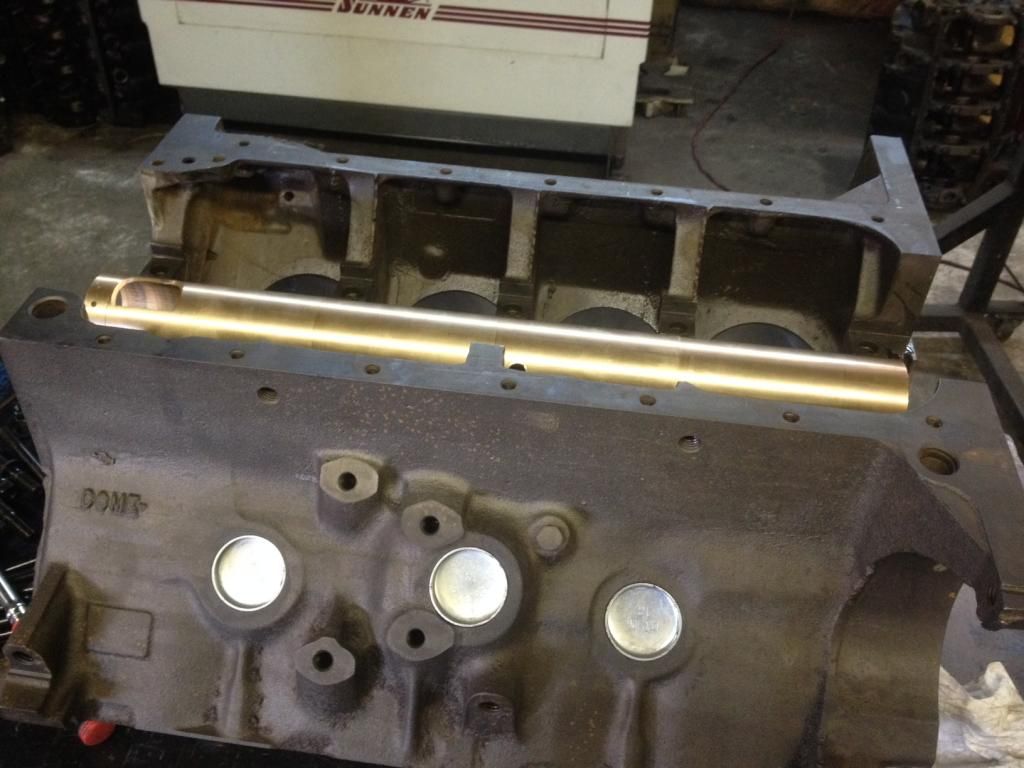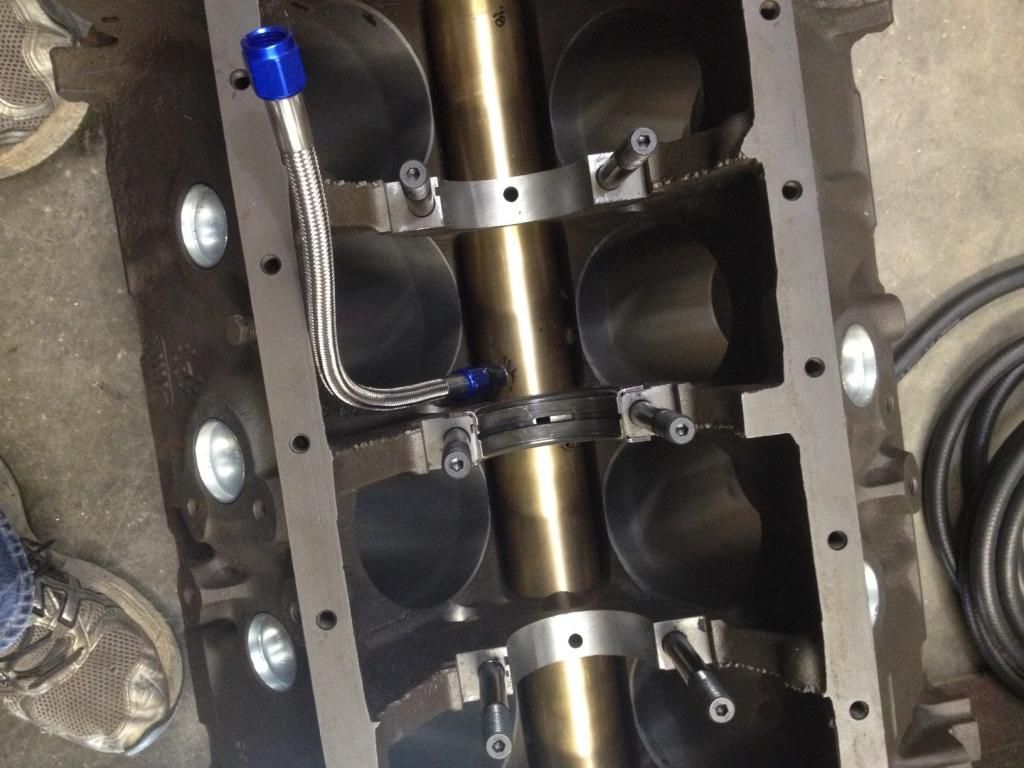Alright, here's an update to all this cam tunnel lingo...
The block I am doing this for is an FE block. 75% of my stuff is FE, so I figured it would be some good R&D for some future race engine builds, and would give me something to play with here.
Instead of using a sheet metal half pipe between the bulkheads, I went about it in this direction:
The tunnel is the cam bearing...



The ID of an FE cam tunnel is stepped. That actually helped things out, so instead of trying to press fit an entire tube, the tube basically drops in until the last 5/8" and then is a press fit. The tube is stepped, basically with the same OD as the cam bearings.
Holes are drilled from the mains to the cam to feed the oil, and all the necessary grooves on the front of the tunnel are there to oil the distributor and timing set.
The lifter valley will be more or less sealed off. The drain holes in the block were candidates for 3/4" cup plugs and the heads will drain straight to the pan.
To install, I just slip it in, then draw it in with a roller cam bearing tool. Pretty simple. We bored the lifter bores for bronze bushings, so the bores were opened up, the cam tunnel installed, then the cam tunnel was bored for lifter holes, then the bushings were pressed in. They extend down into the tunnel. This of course was all done with a BHJ lifter tru fixture.
To drain the tunnel, I drilled and tapped the tunnel for (2) 1/4" NPT holes, right on the front and back side of the thrust bearing bulkhead. There's plenty of room there, and I can drain the tunnel through (2) -6AN hoses that attach near the pan rail and empty straight into the oil pan out of the way of the rotating assembly.

Got a little head and intake work to finish, but I hope to have it running soon. Rotating assembly is here, camshaft is here, just need to finalize some things.









